GROWING PLUMS
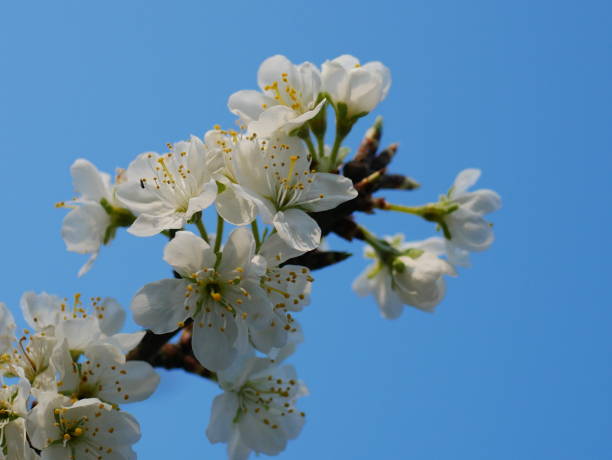
When growing plums it is important to choose the type of plum that will work best in your garden as well as knowing when and where to plan your tree and the type of soil that is needed. You should also look for organic plants that has a healthy and well-balanced branches with a strong central leader, this will allow you to train and prune the plant.
Plums likes very sunny position and are best planted during the winter period, late winter of early spring when trees are dormant. Bare root plants when it is planted directly in the ground will establish itself much faster than container-grown trees and young trees will need staking for the first few years. It is important to choose a type of plum that will work best in your garden. Let us look three categories of plum trees.
Green Gage
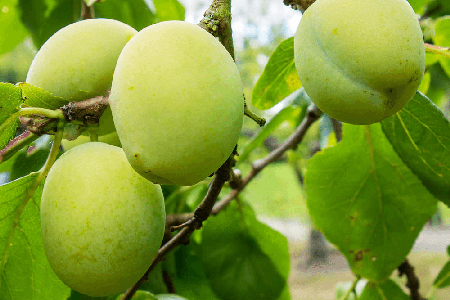
Is a very sweet plum great for making plum pudding and preserves. Also known as Reine Claude with yellow-green skin. Unfortunately It does not have a long life as some other plums. Is a very sweet plum great for making plum pudding and preserves. Also known as Reine Claude with yellow-green skin. Unfortunately It does not have a long life as some other plums.
Stanley
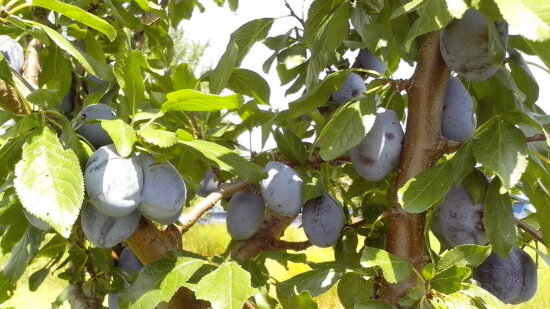
Stanley is a multipurpose plum that is delicious fresh or canned. They are usually medium-to-large oval shape fruits with yellow flesh that are very sweet. This plum is great when dried to make prunes. Stanley is a highly productive tree that usually starts bearing in three years.
The Victoria
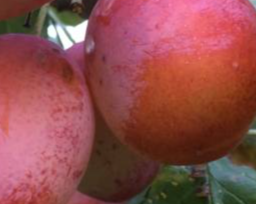
The Victoria plums produces heavy crops of delicious, egg-shaped fruits. As well as eating it in their natural state they are good for making jams and chutneys. Victoria trees tends to be grafted on to a semi-dwarfing rootstock, which produces a compact tree suitable for small to medium-sized gardens. Victoria trees does not need a pollination tree to be planted near by because it is self-fertile. However, check with your garden centre or organic supplier to ensure your plant is self-fertile so no need for another tree to be planted nearby.
When To Plant Your Plum Trees
Plums are best planted during the winter period, late winter or early spring when trees are dormant but where it will receive about 6-8 hours of direct sunlight in the summer, in particularly Victoria plums. Plums also do best in a sheltered location, facing south or southwest. Bare root plants when it is planted directly in the ground will establish itself much faster than container-grown trees and young trees will need staking for the first few years.
Soil Required
Plums trees are best planted in well drained soil, preferably clay or loamy soil. Victoria and gages in particular, disliked being in water logged soils. If you have sandy or chalky soil it is best to add some bulky organic material such as well rotted compost or farmyard manure before planting your plum trees. If you decide to grow your plum tree in a container, it is best to choose a large size pot so there is enough room to add organic soil and compost, to prevent your plum tree from drying out during hot weather.
Feeding Your Plum Trees
To maintain the development of your organic plum tree I would suggest feeding with aged manure on mature trees if you can obtain this from your suppliers or garden centre or other organic fertilizer, from around March, of the first and second year of growth. Also ensure that you give your plum tree plenty of water during dry seasons to maintain moisture and put shredded bark or other mulch around the tree to help with water retention; making sure not to let it touch the trunk.
When Prune your Plum Tree
I have found that the best time to prune an establish plum tree is either during spring or mid-summer. However, if your plum tree is still young and developing, prune it in the spring rather than summer. Do not prune in winter as your tree is likely to develop fungal diseases like Silver leaf which would then make the leaves dry and silvery.
Pruning should really only be done once a year to promote healthy growth and to prevent your tree from getting out of control. Doing this will also help you to manage the amount of fruits your tree will bear. Regular pruning just above healthy buds, as well as the removal of dead wood, will encourage a bowl shape which will make fruit retrieval easy
How To Prune
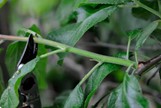
I found that using a good quality secateurs that is sterilise and sharp is important. Always use sterilized and sharp pruning shears when you trim. In the first year cut back the current season’s growth of the main shoots to half their length. The central leader branch should be cut back to 2 feet (61 cm.) above soil level on new trees. Always make the cut just above a bud.
Once you have made the cut, you can rub off the bud directly below the cut. Be sure that there are at least three buds below. You should prune to just above a leaf. Prune side shoots back to two or three buds from the base of the current season’s soft growth. In the second year, cut the main stem back about 12-20 inches. Lateral shoots will have grown from the buds you left the previous season. Prune all these lateral shoots to a bud, about 10 inches long. In the second year do also remember to remove dead deceases or branches that are crossing each other. Regular pruning just above healthy buds, as well as the removal of dead wood, will encourage a bowl shape which will make fruit retrieval easy.
Further reading.
https://www.gardeningknowhow.com/edible/fruits/plum/growing-plum-trees.htm